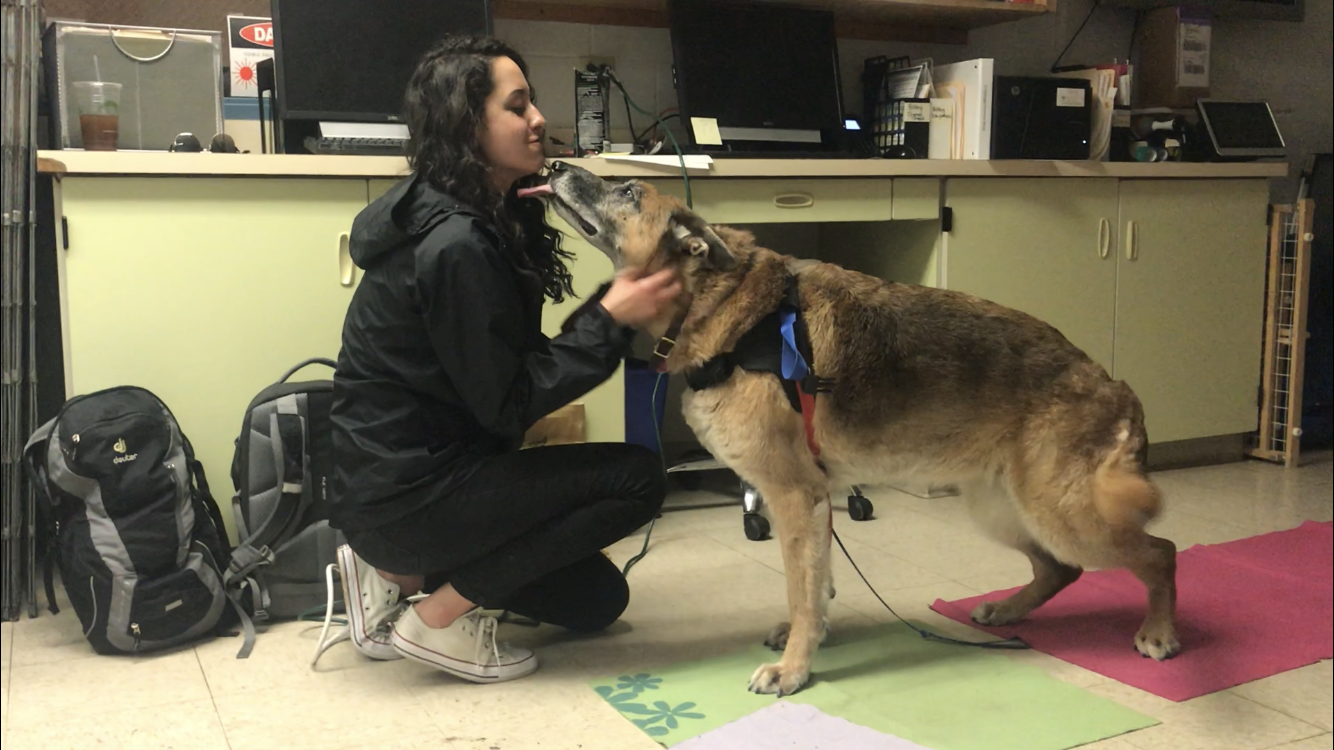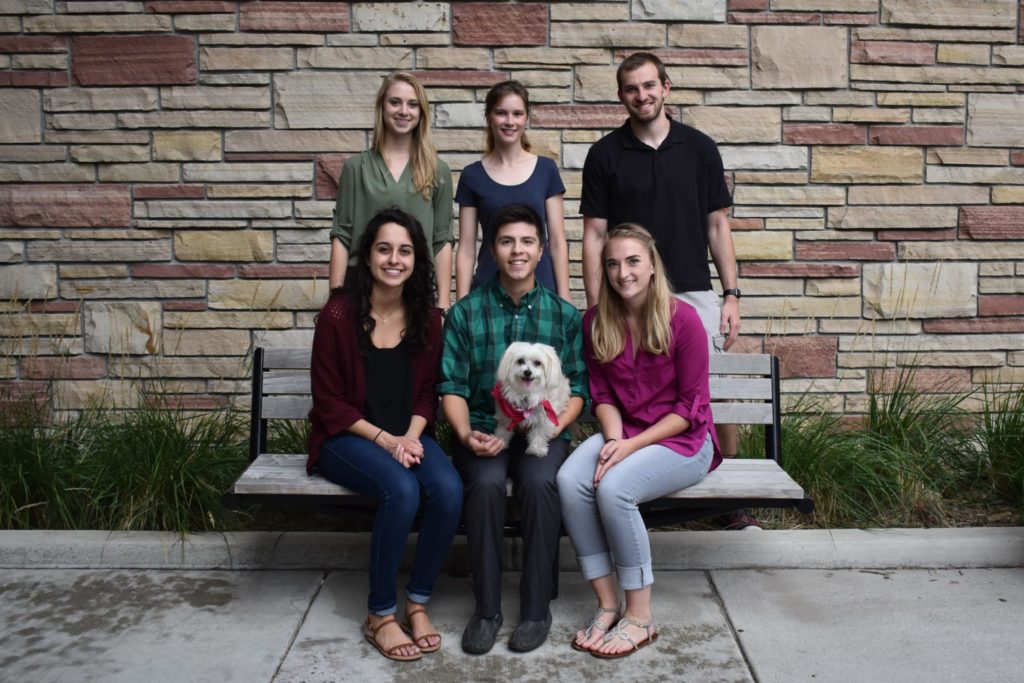
For pups with hind limb paralysis, rehabilitation options are limited. While some owners are able to afford physical therapy for their canines, many dogs end up using a cart that functions like a wheelchair, offering little long-term support.
A transdisciplinary Senior Design team in the Department of Electrical and Computer Engineering is improving upon an existing project to create an exoskeletal rehabilitation system for large dog breeds suffering from mobility impairments. Whereas previous iterations of the project captured canine movement data to inform the exoskeleton design, this year’s team is working to create a functional device and actually test it on dogs with hind limb paralysis.
“The dog we’re working with, Rosie, has some motor function in her hind limbs, but it’s more of a coarse motor function, and she has a hard time moving the little ligaments in her paws,” said Courtney Barber, biomedical engineering and mechanical engineering student.
Creating a user-friendly design
The team is partnering with the Denver-based canine orthopedic company, OrthoPets, and the CSU Veterinary Teaching Hospital. Nic Lambrechts, Rebecca Packer, and Sasha Foster, in addition to

helping the students identify a dog to test the exoskeleton, have provided research and insight to help guide the design of the device. User friendliness is a must, as one of the long-term goals of the project is to create a device for a clinical setting.
While ease of use for the customer is essential, the students re-discovered the importance of making the exoskeleton a dog-friendly device – the hard way. Halfway through winter break, the team initiated a major design change. One of the major reasons for the change? The device was too noisy, and it was spooking the pups.
“The original system was really loud – it scared dogs. Our design now is much, much quieter,” said Austin Bieber, computer engineering student.
Plans for future paws
Now that the design has factored in usability for both humans and canines alike, Rosie becomes a key partner while the students refine the device. To perfect the exoskeleton’s functionality, future Senior Design teams will work with dogs of varying disabilities to test the limits of the device and accommodate different ranges of paralysis.
Though a challenge to recreate the device using different parts, the redesign served as a hands-on learning experience – one of the foundational pillars of the Senior Design program. The Canine Exoskeleton for Rehabilitation is an ongoing Senior Design project, so this group of students will pass the project, along with all their hard work, on to another team at the end of the semester.
See their progress – and Rosie – at the E-Days Senior Design Showcase Thursday, April 12, 9 a.m.-3 p.m. in the Lory Student Center.